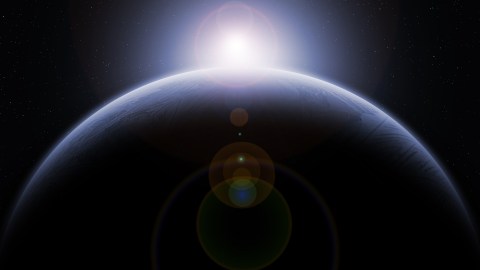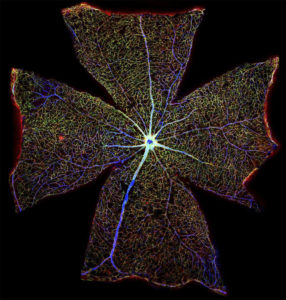How the Universe Was Filled with Light

Many spiritual traditions talk about the first state of the world as being dark, only to be filled with light upon a god’s command. In scientific understanding, the period after the Big Bang was completely dark. Somewhere between 200,000 and one billion years later, further expansion of the Universe happened, bringing with it all the matter we know today as well as visible light. But the specifics of the transition from the darkness has been a great mystery until a new study by researchers from the University of Iowa, who claim to have figured out how the exactly the universe got filled with light.
The scientists theorize that black holes found at the center of galaxies throw matter out with such force that the ejected material can pierce its surroundings, making light escape. The researchers arrived at their conclusion by observing ultraviolet light escaping from Tol 1247-232 – a galaxy located about 600 million light years away from Earth.
One of the study’s authors, Professor Philip Kaaret from the Department of Physics and Astronomy, shared what they found:
“The observations show the presence of very bright X-ray sources that are likely accreting black holes,” said Professor Kaaret. “It’s possible the black hole is creating winds that help the ionizing radiation from the stars escape. Thus, black holes may have helped make the universe transparent.”
How would a black hole, normally known for sucking in matter, actually eject it? There is no definite answer, as black holes are hard to study, especially because they don’t allow light to escape. Recently, however, scientists have been looking at the possibility that jets of escaping matter can be propelled by the accelerated rotational energy of a black hole as well as magnetic fields.
“As matter falls into a black hole, it starts to spin and the rapid rotation pushes some fraction of the matter out,” said Kaaret. “They’re producing these strong winds that could be opening an escape route for ultraviolet light. That could be what happened with the early galaxies.”
Next, Kaaret looks to study Tol 1247-232 and look for other galaxies to confirm his theory.
You can read the new study in the Monthly Notices of the Royal Astronomical Society.





